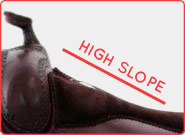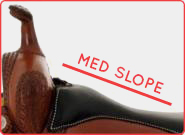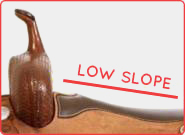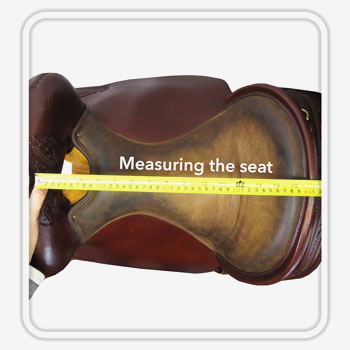Parts of the Saddle - The Seat
Parts of the saddle | The seat
Seat {seet} : n. The part of the saddle designed to support the rider.
The seat of the saddle is one of the most important reasons why we stick to name brand American manufacturers. If you've never had a long trail ride on a poorly constructed seat, well, we hope you never do. Just like a poorly made saddle tree will create a testy horse, a badly constructed seat produces a testy rider.
Every seat begins with a "ground seat" that is attached to the tree of the saddle. The ground seat is both curved and a bit sloped, both to match the pelvic tilt of the rider. High-quality saddles have curved ground seats; low-quality saddles have flat ground seats that are about as comfortable as riding a two by four.
Seat slope
The seat slope is the gentle angle that the seat takes from the pommel, beck to the cantle. Your weight will mainly rest at the lowest point, which is why slope is pretty important to how comfortable you'll be. However, the slope is determined by both preference and function.
Cutting and roping saddles, for example, have hardly any slope because the rider is moving so much in the saddle and any slope would probably cause pelvic pain. If you're just buying a trail riding saddle, however, the slope of the saddle is up to your preference. Some riders think that the best slope is flatter because it allows them to sit with more balance.
 |  |  |
Soft or hard?
Whether you prefer a padded seat or hard seat is, again, just a preference. A well-made saddle will feel comfortable whether there is padding on the seat or not.
Seat material
Seats are most often made out of leather. Grainout leather or suede seats allow the rider a better grip in the saddle and are usually used for cutting and barrel racing saddles.
Seat size
Saddles come in a variety of seat sizes. The size of a seat is measured between the bottom of the horn to the top of the cantle. How do you know what seat size is right for you? As a good starting point, you can look at our chart here.
Seat size, however, is not the only factor in how a saddle will feel. Not every 16-inch saddle will feel the same. As discussed above, the slope and curve of the ground seat affect the feel as well as the angle of the cantle and fork of the saddle. If you're between sizes, we recommend that you go with the larger size. It's better to have a little more room than not enough, although some riders do prefer a tighter fit.
